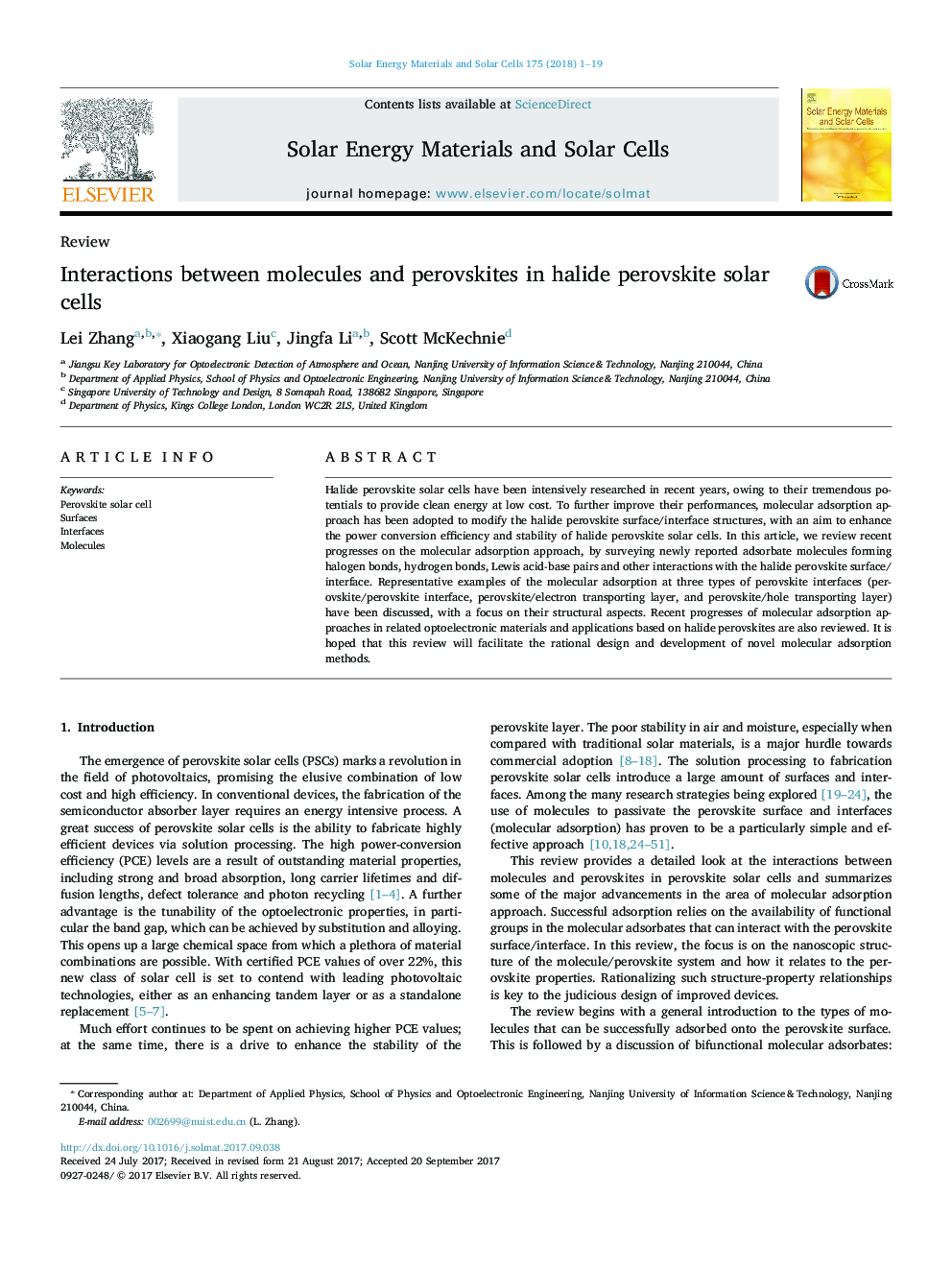| Article ID | Journal | Published Year | Pages | File Type |
|---|---|---|---|---|
| 6534492 | Solar Energy Materials and Solar Cells | 2018 | 19 Pages |
Abstract
Halide perovskite solar cells have been intensively researched in recent years, owing to their tremendous potentials to provide clean energy at low cost. To further improve their performances, molecular adsorption approach has been adopted to modify the halide perovskite surface/interface structures, with an aim to enhance the power conversion efficiency and stability of halide perovskite solar cells. In this article, we review recent progresses on the molecular adsorption approach, by surveying newly reported adsorbate molecules forming halogen bonds, hydrogen bonds, Lewis acid-base pairs and other interactions with the halide perovskite surface/interface. Representative examples of the molecular adsorption at three types of perovskite interfaces (perovskite/perovskite interface, perovskite/electron transporting layer, and perovskite/hole transporting layer) have been discussed, with a focus on their structural aspects. Recent progresses of molecular adsorption approaches in related optoelectronic materials and applications based on halide perovskites are also reviewed. It is hoped that this review will facilitate the rational design and development of novel molecular adsorption methods.
Related Topics
Physical Sciences and Engineering
Chemical Engineering
Catalysis
Authors
Lei Zhang, Xiaogang Liu, Jingfa Li, Scott McKechnie,
